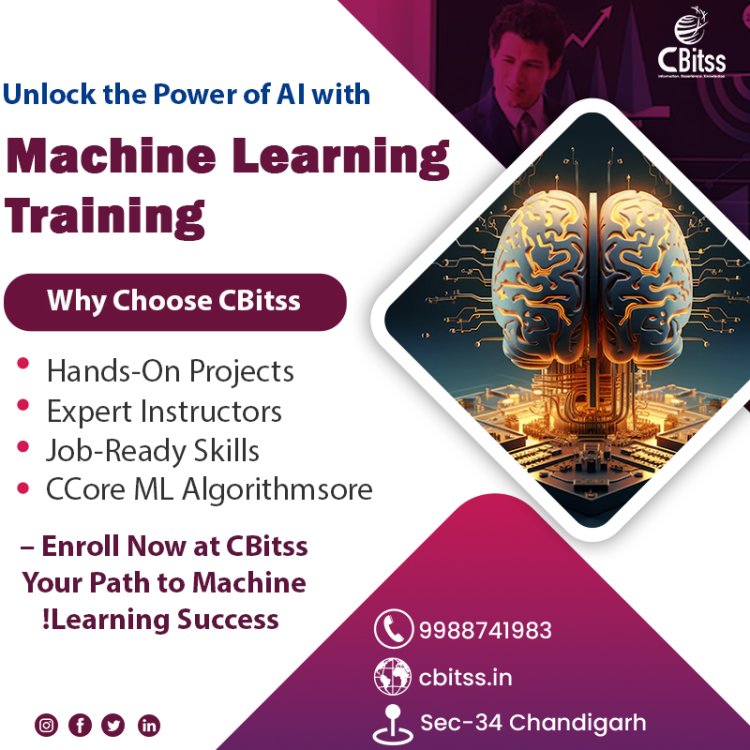AI and Machine Learning Understanding the Basics
Learn the basics of Artificial Intelligence (AI) and Machine Learning (ML) in simple terms. Discover their key differences, real-world uses, and why gaining AI and ML skills is important in today’s digital world.
Explore the fundamentals of AI and machine learning in simple terms. Learn how they work, how they're different, and why they matter in today's digital world.

What Is Artificial Intelligence (AI)?
Artificial Intelligence refers to machines that can mimic human intelligence. These machines are designed to think, learn, and sometimes even make decisions, just like a person might—only faster and often more accurately.
These tasks may include recognizing speech, understanding language, solving problems, making decisions, or even learning from experience.
Whether it's a chatbot answering customer queries or a smart assistant helping you schedule a meeting, AI powers many systems we use every day.
Key features of AI include:
-
Automation: Repeating tasks with speed and accuracy
-
Reasoning: Solving problems based on logic
-
Perception: Interpreting images, sounds, and text
-
Learning: Improving over time using data
What Is Machine Learning (ML)?
Machine Learning is a subset of AI that focuses on teaching machines to learn from data—without being explicitly programmed. Instead of telling a machine exactly what to do, we feed it large amounts of data and allow it to identify patterns and improve its performance.
Here’s a simple example:
When you upload new photos to your phone, it often groups them by faces. That’s ML at work—learning how to recognize people from previous images and making accurate predictions.
Types of machine learning include:
-
Supervised learning: Learning with labeled data
-
Unsupervised learning: Finding patterns in unlabeled data
-
Reinforcement learning: Learning from feedback and rewards
AI vs. ML: What's the Difference?
| Feature | Artificial Intelligence | Machine Learning |
|---|---|---|
| Definition | The broader goal of creating smart machines | A method to achieve AI through data-driven learning |
| Objective | Mimic human intelligence | Learn from data and make predictions or decisions |
| Scope | Wide (includes ML, robotics, expert systems, etc.) | Narrow (focused on data patterns and algorithms) |
ML is one of the ways we build AI systems. Most of the AI applications we see today use machine learning in some form.
Where Do We See AI and ML in Real Life?
Chances are, you’ve already interacted with AI or ML today. These technologies are quietly working behind the scenes in:
-
Healthcare:
AI helps detect diseases through image analysis and predicts treatment outcomes. -
Banking:
ML detects fraud and automates customer service. -
Retail:
AI personalizes shopping experiences with product recommendations. -
Transport:
GPS apps use ML to suggest the fastest routes. -
Social Media:
Platforms use AI to curate content and recognize photos.
Why Should You Learn About AI and ML Now?
You don’t have to be a software engineer or data scientist to benefit from learning the basics of AI and ML. These skills are becoming useful in many non-tech areas like marketing, finance, healthcare, education, and even design.
Here’s why more people are exploring AI and ML today:
-
Growing Demand Across Industries
Businesses are actively looking for people who can understand or work with AI/ML technologies, even at a basic level. -
Career Opportunities
Entry-level jobs in AI support, testing, and design are now available to trained beginners. -
Problem-Solving Skills
AI teaches you how to approach real-world problems logically and efficiently. -
Empowerment in a Digital World
Understanding AI helps you use technology more effectively and responsibly, both at work and in daily life.
How to Get Started with AI and ML
Learning AI and ML doesn’t mean you have to dive deep into programming right away. You can begin with:
-
Introductory Courses:
Free and beginner-friendly courses on platforms like Coursera, edX, or Khan Academy. -
Workshops and Bootcamps:
Local institutions often offer AI/ML training in cities like Chandigarh and online. -
YouTube and Podcasts:
Short-form content to help you learn at your own pace. -
Books and Blogs:
Start with titles designed for beginners.
Take the first step today. Whether through a short online course, a workshop in your city, or a self-paced tutorial, learning AI and ML is more accessible than ever.
No pressure—just curiosity and the willingness to explore.
What's Your Reaction?

















.jpg)
